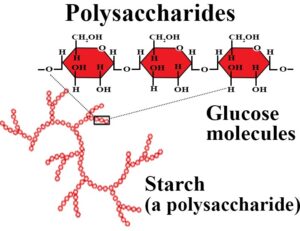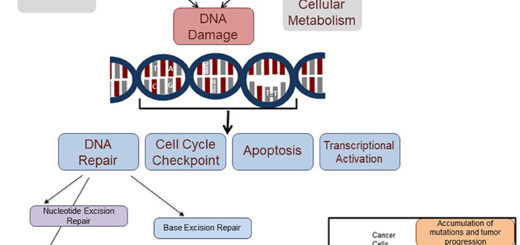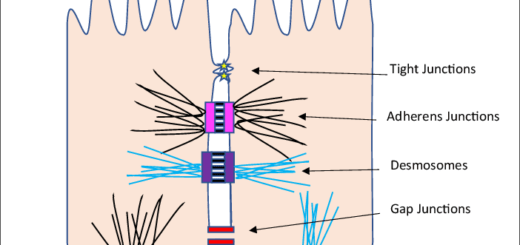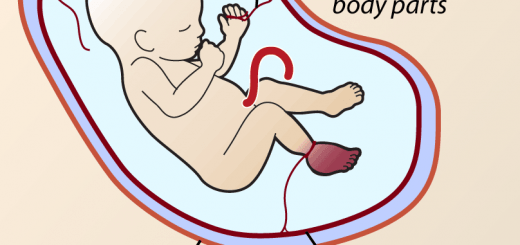Carbohydrates, Polysaccharides, Proteoglycans, Glycoproteins & Glycosaminoglycans
Carbohydrates are broken down into smaller units of sugar. These small units get absorbed out of your digestive tract and into your bloodstream. This blood sugar, or blood glucose, is transported through your bloodstream to supply energy to your muscles and other tissues. Carbohydrates supply energy to the body and prevent the breakdown of proteins for energy.
Carbohydrates
Most of your body cells use the simple carbohydrate glucose for energy, but your brain is particularly in need of glucose as an energy source. So, we can add that an important function of carbohydrates is supplying energy to the brain. The liver contains approximately 100 grams of glycogen. These stored glucose molecules can be released into the blood to provide energy throughout the body and help maintain normal blood sugar levels between meals.
Unlike liver glycogen, the glycogen in your muscles can only be used by muscle cells. It is vital for use during long periods of high-intensity exercise. Muscle glycogen content varies from person to person, but it’s approximately 500 grams. In circumstances in which you have all of the glucose your body needs and your glycogen stores are full, your body can convert excess carbohydrates into triglyceride molecules and store them as fat.
Polysaccharides (Glycans)
They are polymers of more than 10 units of monosaccharides or their derivatives (e.g. amino sugars and uronic acids) linked together by glycosidic linkages.
Classification of polysaccharides:
1- Homopolysaccharides (simple): Contain only one type of monosaccharide units.
- Glucosans e.g. Starch, glycogen, cellulose.
- Fructosans e.g. Inulin.
2- Heteropolysaccharides (mixed): Contain more than one type of monosaccharide residues.
a. Acidic (mucopolysaccharides = glycosaminoglycans = GAGs). They contain uronic acids and aminosugars and may or may not be sulphated.
- Sulfate free: e.g, Hyaluronic acid.
- Sulfated: e.g. Chondroitin sulfate, Dermatan Sulphate, Heparin, Heparan sulphate and Keratan sulphate.
b. Neutral Polysaccharides: The oligosaccharide groups of glycoprotein contain sugars and aminosugars with no uronic acid or sulfuric acid, e.g. Human blood group substances.
Simple Polysaccharides
1- Starch
Starch is the storage form of carbohydrates in plants and the major source of carbohydrates for animal, each starch molecule is formed of two types of glucosans:
- Amylose: the inner part, formed of straight-chain of α-D-glucose units linked by α-1,4 glucosidic bonds, it gives a blue color with iodine.
- Amylopectin the outer part, formed of branched-chain of α-D-glucose units linked by α-1,4 glucosidic bonds except at the branching points where the linkages are α-1,6 glucosidic bonds, it gives a red-violet colour with iodine.
Complete hydrolysis by acids gives rise to glucose units and by amylase enzyme gives rise to maltose as end products, while partial hydrolysis gives rise to various forms of dextrins e.g. amylo, erythro and achrodextrins.
2- Glycogen
- Glycogen is the storage form of carbohydrates in animals, it is stored mainly in the liver and muscles.
- Its structure is similar to that of amylopectin but it is highly branched and more compact.
- It gives red-brown color with iodine.
3- Cellulose
- It is a structural polysaccharide present in plants.
- It is composed of a linear polymer of D-glucose units connected together by β-1,4 glucosidic linkages.
- It is not digested in humans (due to the absence of cellulase enzyme), but it stimulates intestinal peristalsis and prevents constipation as it forms the main bulk of the stool.
Glycosaminoglycans
1- Sulfate-free (Hyaluronic acid)
It is an acidic heteropolysaccharide or glycosaminglycan (GAG), in normal, synovial fluid hyaluronic acid concentration is about 3-4 mg/ml. It is a linear polymer of repeating disaccharide units of glucuronic acid and N-acetyl D glucosamine linked by O-glycosidic bonds, it acts as a lubricant and shock absorber, it is also present in loose connective tissues.
2- Sulfated
- Chondroitin sulfate consists of a polymer of disaccharide units of D-glucuronic acid and N-acetyl-D-galactosamine sulphated. Distribution: Bone and Cartilage. Chondroitin sulfate is the major GAG in cartilage.
- Keratan sulphate is a polymer of disaccharide units of D-galactose + N-acetyl D-glucosamine (no uronic acid). Sulphate may be present on either sugar, it is also present in cornea and loose connective tissue. It is important for the transparency of cornea
- Heparan sulphate is formed of repeating disaccharides units of D-glucosamine disulphate and either or 2 uronic acids (D-glucuronic acid sulphate and L- iduronic acid sulphate). L-iduronic acid is the 5-epimer of glucuronic acid. It plays important role in cell membrane receptors, cell-cell interaction, in controlling cell differentiation, tissue morphogenesis, and homeostasis.
- Dermatan sulphate: The repeating disaccharide unit contains L-iduronic acid mainly with variable amounts of D-glucuronic acid + N-acetyl D-galactosamine sulphate. It is present in blood vessels, heart valves, and skin, also, it is important for the structure and maintenance of the shape of the sclera of the eye.
Proteoglycans
These are macromolecules found in the extracellular matrix or cell surface containing up to 95% carbohydrates, the basic proteoglycan unit is called Aggrecan or proteoglycan monomer, it consists of a core protein with covalently attached GAGs, the aggregation of these proteoglycan monomers promotes immobilization of proteoglycans within the collagen meshwork, adding structural rigidity to the matrix.
Proteoglycans contain a long strand of hyaluronic acid to which link proteins are attached non-covalently, in turn, link proteins interact non-covalently with core protein molecules, however, glycosaminoglycans are attached covalently to core protein by glycosidic bonds between sugar residue and OH of serine.
GAGs present in proteoglycans are polyanion (-) and can bind greatly with cations (+) like Na+ and K+ which attract water by osmotic pressure into the extracellular matrix producing its hydration.
Glycoproteins
- Glycoproteins are proteins that have oligosaccharide chain (one or several) attached covalently to the polypeptide backbone, the carbohydrate moieties are smaller and more structurally diverse than the glycosaminoglycans of proteoglycans.
- The carbohydrate units may be O-linked (sugar is attached by a glycosidic link to the – OH of serine or threonine) or N-linked (sugar attached to the – NH2 group of asparagines).
- Carbohydrate may constitute from 1 – 70% of glycoproteins.
- The sugar unit in a glycoprotein is:
1. N-acetyl amino sugar
(N-acetyl glucosamine or N-acetyl galactosamine)
2. Hexoses (mannose and galactose).
3. L-fucose (6-deoxy-L-galactose)
4. Sialic acid. ( N-acetyl derivatives of neuraminic acid)
Classification of lipids, Simple lipids & fatty acids, Triacylglycerols & importance of true fats
Carbohydrates importance, Types of Isomerism, Monosaccharides & Disaccharides
Connective tissue cells types, function & structure, Resident cells & Transient cells
Integumentary system, Skin importance, layers, types & function




